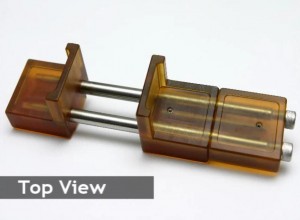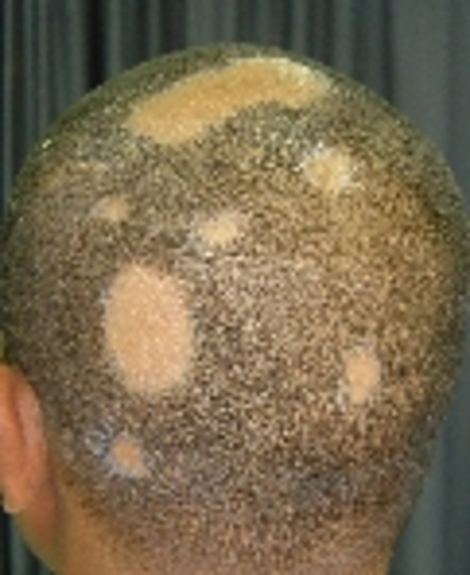Posts Tagged ‘hair loss innovations’
Wednesday, December 9th, 2009
 Recently, Dr. Parsa Mohebi, Medical Director of US Hair Restoration Los Angeles, gave a lecture on a new way to use the Laxometer during mega and giga-session hair transplants at the annual ISHRS (International Society of Hair Restoration Surgery) gathering in Amsterdam, Netherlands. As mentioned in other hair transplant industry gatherings, the Laxometer has the ability to make more accurate the strip removal method during a follicular unit hair transplant and, at the same time, minimizing the risk of donor scar complications. Recently, Dr. Parsa Mohebi, Medical Director of US Hair Restoration Los Angeles, gave a lecture on a new way to use the Laxometer during mega and giga-session hair transplants at the annual ISHRS (International Society of Hair Restoration Surgery) gathering in Amsterdam, Netherlands. As mentioned in other hair transplant industry gatherings, the Laxometer has the ability to make more accurate the strip removal method during a follicular unit hair transplant and, at the same time, minimizing the risk of donor scar complications.
At the 2009 ISHRS Meeting, Dr. Mohebi discussed a new manner in which to utilize the Laxometer for patients who have limited laxity of the scalp because of previous hair transplant surgeries or for people needing a max number of grafts in one session (3000+, 4000+, 5000+, etc.). In 2008, Dr. Mohebi tried a different method by which he removed the strip in sequences for hair restoration procedures using the Laxometer before and after removal of every part of the strip. This particular way of using the Laxometer has resulted in a safer strip removal and, at the same time, has lessened the risk of donor wound complications.
The findings revealed at the ISHRS meeting proved that the Laxometer is the ideal surgical tool for increasing the number of hair grafts during a strip hair transplant while minimizing donor wound complications of a hair transplant surgery. Because of the results Dr. Mohebi found, he has been using the Laxometer at his California hair transplant offices quite often and it has resulted in a lot of satisfied patients.
Tags: complications, donor complications, giga session, gigasession hair transplant, hair loss and hair transplant devices, hair loss innovations, hair transplant complications, hair transplant donor scar, hair transplant donor wound, high grade baldness, International Society of Hair Restoration Surgery, ISHRS, laxometer, mega session, megasession hair transplant, men hair loss, scalp laxity
Posted in California hair transplant, hair transplant, men hair restoration | No Comments »
Sunday, December 6th, 2009
I get questions about hair multiplication, hair loss, stem cell hair regrowth, and hair cloning transplants quite often. At the International Society of Hair Restoration Surgery (ISHRS) this year a gathering in which hair transplant industry experts and doctors meet and share new findings we learned that hair multiplication may be years away before it can be a viable solution for hair loss, if ever. The latest findings presented by Intercytex, which is known to be the leading corporation in hair cloning research, announced that they haven’t even completed phase two of their hair multiplication study. quite often. At the International Society of Hair Restoration Surgery (ISHRS) this year a gathering in which hair transplant industry experts and doctors meet and share new findings we learned that hair multiplication may be years away before it can be a viable solution for hair loss, if ever. The latest findings presented by Intercytex, which is known to be the leading corporation in hair cloning research, announced that they haven’t even completed phase two of their hair multiplication study.
Earlier, Intercytex announced that their research team had completed phase two and were about to start on phase three. Apparently, there must’ve been some type of miscommunication. Intercytex’s latest announcement is a step back for the hair transplant industry and means we are not as far along in our hair cloning research as we had thought.
For those who are eagerly waiting for hair multiplication to become a reality, it means they’ll have to wait even longer, if it ever even becomes a reality.
Whenever any new type of medical treatment is being examined and tested, researchers must put the particular type of treatment through several phases to gauge the efficacy and safety of it. Phase three of a study is when a few human subjects are voluntarily subjected to the new type of treatment for an extended period of time to make certain of the long-lasting effects and safety of it.
Intercytex did not talk about the reason for which phase two of the hair multiplication research wasn’t completed. Now that we know how much progress has been made on hair cloning, we can be assured it will be at least eight years before hair multiplication is a possibility. At US Hair Transplant, we’ve teamed together with ISHRS to figure out another type of stem cell hair research. Our study is still in its beginning phases, but, we assure you, we will announce our hair stem cell research findings as soon as they’re made available.
Tags: hair cloning, hair loss innovations, hair multiplication, hair stem cell, intercytex, ISHRS
Posted in hair transplant, men hair restoration | No Comments »
Saturday, September 5th, 2009
 Alopecia Areata (AA) is an autoimmune hair loss condition. It presents itself in the form of patchy hair loss on the scalp or other areas where hair exists. Some have questioned if AA can also be triggered by emotional stress. It has been discussed in some medical journals but the exact mechanism has never been explored. There has been a study conducted and published on the relationship between stress and the pathogenesis of alopecia areata. This was done by subjecting AA-affected and normal lab mice to ether anesthesia (stress) through restraining the animal. Alopecia Areata (AA) is an autoimmune hair loss condition. It presents itself in the form of patchy hair loss on the scalp or other areas where hair exists. Some have questioned if AA can also be triggered by emotional stress. It has been discussed in some medical journals but the exact mechanism has never been explored. There has been a study conducted and published on the relationship between stress and the pathogenesis of alopecia areata. This was done by subjecting AA-affected and normal lab mice to ether anesthesia (stress) through restraining the animal.
The mice with alopecia areata had a marked increase in hypothalamic-pituitary-adrenal tone and activity centrally and peripherally in the skin and lymph nodes. Plasma corticosterone, adrenocorticotropic hormone, and estradiol levels were determined in this study as indicator or stress level, whereas gene expression in brains, lymphoid organs, and skin was measured by quantitative RT-PCR for corticotropin-releasing hormone, arginine vasopressin, proopiomelanocortin, glucocorticoid receptor, mineralocorticoid receptor, corticotropin-releasing hormone receptor types 1 and 2, interleukin-12, tumor necrosis factor-alpha, and estrogen receptors type-1 and type-2.
Compared to normal mice, there was an altered interaction seen between the adrenal and gonadal axis proving that the stress level in those animals was in fact higher. Stress also caused changes in the activity of the hypothalamus pituitary axis in the mice with AA.
In addition, animals with AA had significantly blunted corticosteroid and ACTH responses to acute ether stress (physiological stressor) and a deficit in habituation to repeated restraint stress (psychological stressor). These findings further suggest that altered brain responses caused by stress may be associated with the occurrence of alopecia areata, proving the hypothesis that stress plays an important factor.
Treatment of AA is done through observation of the patient and, in some cases, steroid injections can also prove useful. These treatment options have shown some improvement in those who have extensive types of AA like Alopecia Totalis. We do not recommend any patient to get hair transplant surgery if they have active AA since the chance of losing the newly transplant hair is very likely.
Although AA is not genreally treated with hair restoration, we at our offices of US Hair Restoration in LA, BH and Orange County visit and treat patients of AA in a regular basis.
Tags: AA, ACTH, adrenocorticotropic hormone, alopecia areata, alopeica totalis, arginine vasopressin, Avp, CORT, corticotropin-releasing hormone, estradiol, glucocorticoid receptor, hair loss, hair loss innovations, hair transplant, hair transplant surgery, lymphoid organs, mineralocorticoid receptor, proopiomelanocortin, RT-PCR, sress level
Posted in Beverly Hills hair transplant, California hair transplant, Los Angeles Hair Transplant, Orange County hair transplant | No Comments »
|
|
 Recently, Dr. Parsa Mohebi, Medical Director of US Hair Restoration Los Angeles, gave a lecture on a new way to use the Laxometer during mega and giga-session hair transplants at the annual ISHRS (International Society of Hair Restoration Surgery) gathering in Amsterdam, Netherlands. As mentioned in other hair transplant industry gatherings, the Laxometer has the ability to make more accurate the strip removal method during a follicular unit hair transplant and, at the same time, minimizing the risk of donor scar complications.
Recently, Dr. Parsa Mohebi, Medical Director of US Hair Restoration Los Angeles, gave a lecture on a new way to use the Laxometer during mega and giga-session hair transplants at the annual ISHRS (International Society of Hair Restoration Surgery) gathering in Amsterdam, Netherlands. As mentioned in other hair transplant industry gatherings, the Laxometer has the ability to make more accurate the strip removal method during a follicular unit hair transplant and, at the same time, minimizing the risk of donor scar complications.

